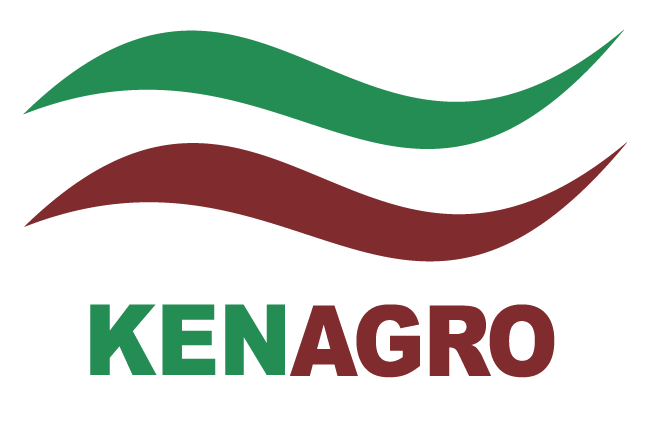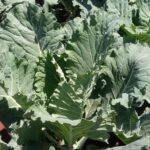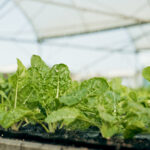Peas farming in Kenya is a highly rewarding agribusiness venture thanks to the crop’s strong market demand, nutritional value, and export opportunities. Peas are rich in protein, vitamins, and fibre, making them a popular choice in households, hotels, and school feeding programs. Beyond nutrition, peas also serve as a profitable rotational crop, improving soil fertility and supporting sustainable agriculture.
This comprehensive guide highlights the essential steps, best practices, and modern techniques for profitable pea cultivation in Kenya, helping farmers achieve high yields and maximize income.
1. Crop Selection and Planning
Selecting the right pea variety is crucial for success in peas farming in Kenya. Farmers should match varieties to their climatic zone, soil type, and market demand. Always plant certified seeds to guarantee high germination rates, better disease resistance, and improved yields. Certified seeds also ensure uniform growth and higher-quality produce, which increases market value and export potential.
Common Pea Varieties in Kenya:
- Green Arrow – Popular for its sweetness and long pods
- Wando – Drought-tolerant and suitable for cool climates
- Oregon Sugar Pod – Preferred for snow peas and stir-fry markets
- Progress No. 9 – Suitable for fresh markets and quick maturing
Planting Schedule:
- Best planted during cool seasons: February–April and August–October
- Can be grown in both rain-fed and irrigated systems
Plan around rainfall, market cycles, and labour availability for peak efficiency.
2. Soil and Climate Requirements for Peas Farming in Kenya
Peas farming in Kenya performs best in cool, well-drained soils rich in organic matter. The crop thrives in highland regions where temperatures remain moderate and rainfall is reliable. Key pea-growing areas include Nakuru, Nyandarua, Kiambu, and Meru, which provide the ideal conditions for strong growth and high yields.
Ideal Growing Conditions:
- Soil type: Sandy loam or loam soils
- pH: 6.0–7.5
- Temperature: 10°C–25°C
- Rainfall: 600–900 mm annually
Avoid planting in waterlogged soils, as peas are sensitive to excess moisture and root rot.
3. Land Preparation and Planting Techniques
Land Preparation for Peas Farming in Kenya
First, clear and plough your land 2–3 weeks before planting to create a fine tilth. Next, incorporate well-rotted manure or compost to improve soil fertility and support healthy pea growth. This preparation ensures better root development, higher yields, and a strong start for your crop.
Planting Guidelines:
- Spacing: 30 cm between rows and 5–10 cm between plants
- Depth: Plant seeds 2.5–5 cm deep
- Seed rate: 20–25 kg per acre depending on variety
Ensure the soil is moist at planting for good germination.
4. Crop Management (Irrigation, Fertilization & Weeding)
Irrigation:
First, provide moderate but consistent watering throughout the crop cycle. During flowering and pod formation, water regularly to maximize yields. Also, avoid overwatering to reduce the risk of diseases.
- Peas require moderate but consistent watering
- Water during flowering and pod formation to maximize yields
- Avoid overwatering to reduce disease risk
Feeding the Crop:
Next, apply phosphorus-based fertilizers such as DAP at planting. After flowering, supplement with CAN or compost if needed. In addition, conduct soil tests to guide fertilizer use for optimal growth.
- Use phosphorus-based fertilizers (e.g., DAP) at planting
- Supplement with CAN or compost after flowering if needed
- Conduct soil tests to tailor fertilization
Weeding:
Finally, weed early during the first 4–6 weeks to reduce competition for nutrients and water. Use shallow weeding to protect delicate roots. Furthermore, apply mulch to conserve moisture and suppress weeds.
5. Pest and Disease Control in Peas Farming in Kenya
Common Pests in Peas Farming in Kenya
Pea crops in Kenya are often attacked by aphids, pea weevils, cutworms, and thrips. To reduce damage, inspect fields regularly and remove affected plants.
- Aphids
- Pea weevils
- Cutworms
- Thrips
Common Diseases in Peas Farming in Kenya
Peas can also be affected by powdery mildew, fusarium wilt, root rot, and Ascochyta blight. Therefore, use resistant or tolerant varieties and maintain good field hygiene to prevent spread.
- Powdery mildew
- Fusarium wilt
- Root rot
- Ascochyta blight
Control Measures:
In addition, practice crop rotation with cereals or non-legumes. Apply approved biopesticides or fungicides when necessary. Also, ensure proper plant spacing and keep fields clean to minimize pest and disease problems.
- Use resistant or tolerant varieties
- Practice crop rotation with cereals or non-legumes
- Apply biopesticides or approved fungicides when needed
Ensure proper spacing and field sanitation
6. Harvesting and Post-Harvest Handling
Peas are typically ready for harvest 60–80 days after planting depending on the variety.
Harvesting Guidelines:
- Harvest when pods are full but still tender
- Use clean hands or scissors to avoid plant damage
- Pick regularly to encourage more pod formation
Post-Harvest Handling:
- Sort to remove damaged pods
- Pack in clean, ventilated crates
- Store in cool, shaded areas to maintain freshness
- For longer shelf life, consider refrigeration or freezing
7. Marketing and Value Addition
There is strong local and export demand for fresh and processed peas in Kenya.
Marketing Tips:
- Sell directly to open markets, groceries, hotels, and aggregators
- Partner with farmer cooperatives for better pricing and access to contracts
- Time planting to harvest during off-season when prices are high
Value Addition Opportunities:
- Frozen peas for supermarkets
- Packaged fresh peas in consumer-friendly packs
Pea flour or soup mix for health-conscious consumers
8. Farm Business and Record Keeping
Treat your pea farm as a business for long-term success.
Business Tips:
- Keep accurate records of inputs, yields, labour, and sales
- Monitor profitability and adjust strategies accordingly
- Access financing through SACCOs, microfinance, or Agri-loans
Use mobile apps and extension services for market trends, disease alerts, and weather updates
Unlocking the Potential of Peas Farming in Kenya
Peas farming in Kenya presents an exciting opportunity for farmers seeking a short-term, high-demand crop. With proper seed selection, pest management, irrigation, and marketing, peas can deliver attractive returns while improving soil health.
By following modern farming practices and aligning production to market demands, farmers can build a sustainable and profitable pea farming business in Kenya’s vibrant agricultural sector.





Nathanael Mganda
Exellent